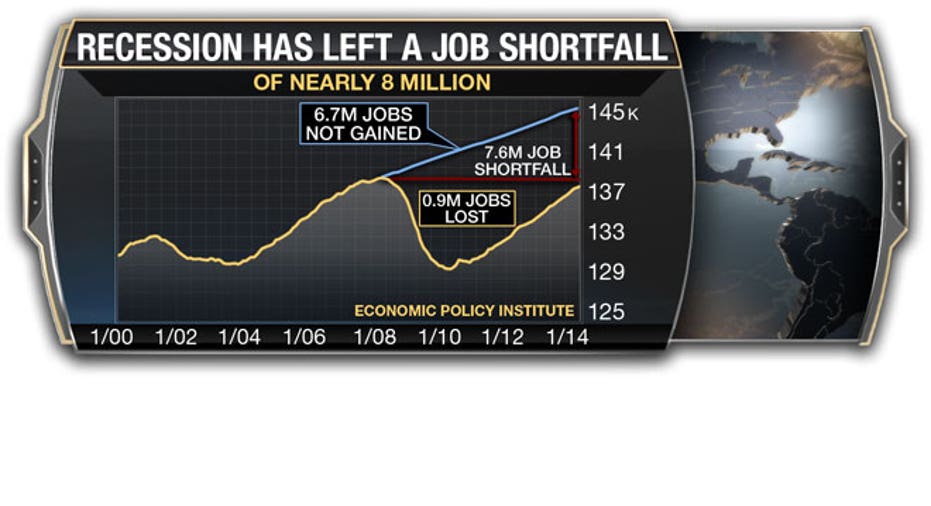'Missing Workers': A Lost Piece in the Unemployment Puzzle

The official unemployment rate, currently at 6.6%, may drastically understate the number of unemployed Americans, with almost 6 million people not being counted, according to recent research from the Economic Policy Institute. The EPI refers to this group as "missing workers."
An estimated 5.85 million Americans are not working and are not looking to work, but they are not included in Bureau of Labor Statistics data, said Heidi Shierholz, an economist at EPI. She explained that if this pool of people were included, the unemployment rate would rise to a staggering 10%.
"Because jobless workers are only counted as unemployed if they are actively seeking work, these 'missing workers' are not reflected in the unemployment rate," said the report.
Currently, there are 10.2 million Americans officially out of work -- 3.6 of those long-term unemployed, according to the Bureau of Labor Statistics. (There was an estimated 7 million out of work prior to the Great Recession.) The BLS is clear that it only counts those unemployed who are actively looking for work in its calculation of the unemployment rate. But with the U.S. labor participation rate at 63%, hovering at its lowest level in 35 years, it is also clear that many Americans are therefore not included in its overall unemployment rate calculations.
In December 2007, the U.S. began losing jobs fast, and by 2010 had lost 8.7 million jobs. Shierholz said that while the U.S. has since added 7.8 million jobs to the economy, there is still an 851,000 deficit – and that on top of that, the growth of the working-age population is not being factored into the equation.
"The potential labor force is growing all the time, so just to keep up with the normal growth in the potential labor force, we should have added an estimated 6.8 million jobs in the last six years," said Shierholz, who said that estimate takes into account that there will always be a portion of U.S. workers out of a job.
By adding the 6.8 million jobs that should be factored in, along with the 851,000 current jobs deficit, there is a roughly 7.6 million jobs gap that is not being counted in the official data, she said.
"Looking back on pre-recession labor-participation rates, that 7.6 million [shortfall] is the amount of added jobs the U.S. would have created if the Great Recession had never hit and the economy had stayed strong," Shierholz said.
This enormous jobs shortfall affects potential workers' choices about whether or not it's worth it to look for work -- and it's not just baby boomers and the very young making such decisions. According to the report, more than half of the 5.85 million "missing workers" are between the ages of 25 and 54, which demographers call the "prime earning years".
Shierholz said it's important to point out that while this huge pool of people should be counted to give a more accurate unemployment picture, not all of these 5.85 million “missing workers” are in dire circumstances.
"It's not all bad. Some went and got their Master's degrees, for instance," she said. "People who may have rejoined the labor force continue to stay at home because maybe it makes more economic sense if they have children.... But it also does mean a big portion of people who aren't working and aren't looking would potentially be if we had a stronger labor market."